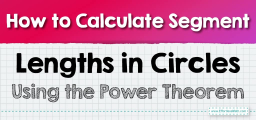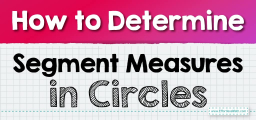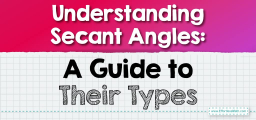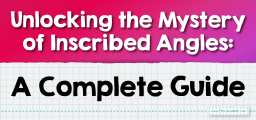How to Inscribe a Regular Polygon within a Circle
In the vast world of geometry, the art of inscribing polygons within circles unveils the beauty of precision and symmetry. Regular polygons, with their equal sides and angles, fit perfectly inside a circle, touching the circumference at all their vertices. This harmonious relationship between straight lines and curves exemplifies geometric elegance. Here, we'll guide you through the general steps to inscribe any regular polygon inside a circle.

Step-by-step Guide: General Steps to Inscribe a Regular Polygon in a Circle
Essential Tools:
- A straightedge or ruler for accurate linear measurements.
- A compass for drawing the circle and aiding in polygon construction.
- A pencil for drawing and annotations.
Procedure:
1. Initiate with a Circle: Begin by drawing a circle of the desired radius using the compass.
2. Determine the Central Angle: The central angle is crucial and is given by the formula:
Central Angle \(= \frac{360^\circ}{n}\)
Where \(n\) is the number of sides of the regular polygon.
3. Constructing Polygon Vertices:
– Place the compass point at the center of the circle, and draw a straight line to any point on the circle’s circumference. This is the starting vertex.
– Using a protractor, measure out the central angle from this line and mark the next vertex on the circle.
– Continue this process, marking each subsequent vertex, until you’ve marked all \(n\) vertices.
4. Connecting the Vertices:
– Using the straightedge, connect consecutive vertices to form the sides of the polygon.
– Ensure each side is of equal length, indicative of a regular polygon.
Examples
Example 1:
You have a circle with a radius of \( 6 \text{ cm} \) and want to inscribe a regular hexagon within it.
Solution:
Central Angle Calculation: For a hexagon, which has \(6\) sides, the central angle is \( \frac{360^\circ}{6} = 60^\circ \).
Constructing the Hexagon:
Draw your circle with a \(6 \text { cm} \) radius using the compass.
Choose a random point on the circle as your starting vertex.
Place the compass’ point at the circle’s center. Using a protractor, measure out a \(60^\circ\) angle from your starting line and mark the next vertex on the circle.
Continue this process, marking every subsequent \(60^\circ\) around the circle until you have six vertices.
Using a straightedge, connect these vertices to form the hexagon.
Validation: You should have a regular hexagon with all sides equal and each interior angle being \(120^\circ\), perfectly inscribed within the circle.
Example 2:
You’re given a circle with a radius of \( 5 \text{ cm} \) and you need to inscribe a regular pentagon within it.
Solution:
Central Angle Calculation For a pentagon, which has \(5\) sides, the central angle is \( \frac{360^\circ}{5} = 72^\circ \).
Constructing the Pentagon:
First, sketch your circle with a \(5 \text{ cm} \) radius.
Choose a starting point on the circle’s circumference.
From this point, with the compass’ point at the circle’s center, use a protractor to measure and mark every subsequent \(72^\circ\) to get the five vertices of the pentagon.
Now, simply connect these vertices using a straightedge.
Validation: What you’ll see is a regular pentagon with equal side lengths and each interior angle measuring \(108^\circ\), fitting perfectly within your circle.
Practice Questions:
- What would be the central angle for a regular decagon (\(10\) sides)?
- How many vertices will touch the circle if a regular pentagon is inscribed in it?
- For a given central angle, can you determine the number of sides of the inscribed regular polygon?

Answers:
- For a decagon, the central angle is \( \frac{360^\circ}{10} = 36^\circ \).
- A regular pentagon has \(5\) vertices, so all 5 vertices will touch the circle.
- Yes, using the formula \( n = \frac{360^\circ}{\text{Central Angle}} \). The value of \( n \) will give the number of sides of the polygon.
Related to This Article
More math articles
- What Kind of Math Is on the CBEST Test?
- 5th Grade DCAS Math Worksheets: FREE & Printable
- How to Write a Formula for a Recursive Sequence
- The Ultimate 7th Grade IAR Math Course (+FREE Worksheets)
- The Ultimate GRE Math Course: The Only Course You Need for Success
- How to Graph Quadratic Functions? (+FREE Worksheet!)
- What Level of Math is Tested on the PSAT/NMSQT?
- From Simple to Complex: Calculus of Surfaces
- Algebra Puzzle – Critical Thinking 15
- Why Learning Styles are a Myth?


























What people say about "How to Inscribe a Regular Polygon within a Circle - Effortless Math: We Help Students Learn to LOVE Mathematics"?
No one replied yet.